AI Image generation has become an important tool for creators, developers, and marketers. With numerous platforms available, finding the ideal one can be challenging.
Among these, FLUX is often highlighted as a leading choice. But is it as good as people claim? Let's explore its capabilities and see how it measures up.
In this comprehensive guide, we will evaluate four prominent AI image generators: Mid-Journey, FLUX, DALL·E, Run Diffusion, and Stable Diffusion. By the end, you'll gain a thorough understanding of each tool's benefits, drawbacks, and most suitable use cases.
What Are AI Image Generators?
AI image generators use machine learning to turn text prompts into images. By training on large datasets, they can understand prompts and create a wide range of visuals, from simple graphics to highly detailed, realistic scenes. These generators often use neural networks, such as Generative Adversarial Networks (GANs) or Diffusion Models, to achieve these results.
Each AI image generator has its own set of strengths, making it more suitable for different project types. Whether you need precision, creativity, or speed, understanding what each tool offers can help you select the best one for your specific needs.
What is Flux?
Black Forest Labs, the team that brought you the groundbreaking Stable Diffusion, has just launched Flux, the latest and most advanced open-source text-to-image model. With an impressive 12 billion parameters, Flux is not just another player in the AI image generation space, it’s making a significant impact online due to its incredible capabilities as a cloud-based solution.
Introducing the Flux Variants
Flux is available in three different versions, each tailored for specific needs:
Flux Dev: An open-source model with guidance distilled into a non-commercial license, ideal for community development. It’s accessible on platforms like Hugging Face, Replicate, and Fal.ai.
Flux Schnell: A highly optimized version that operates up to 10 times faster than similar models, available under the Apache 2 license.
Flux Pro: This premium version delivers cutting-edge performance for high-quality image generation, available through API, Replicate, and Fal.ai.
Both Flux Dev and Flux Schnell can be downloaded from Hugging Face, and ComfyUI has been updated to support these models for local workflows.
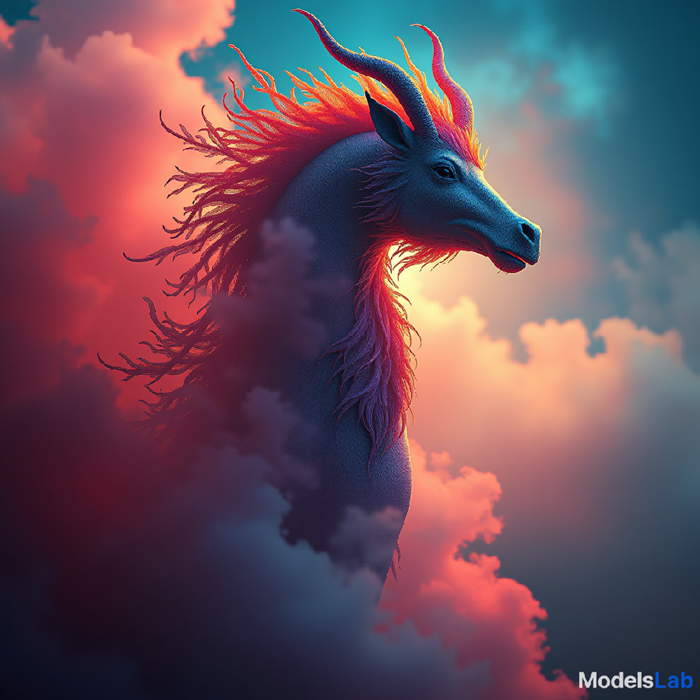
Why Flux is Dominating the Internet
Black Forest Labs has consistently been at the forefront of generative AI technology, especially in media applications. Flux continues this legacy by offering unparalleled image generation speed and quality, alongside its ability to produce incredibly detailed visuals.
How Flux is Setting New Standards
1. Visual Quality: Flux is raising the bar with its ability to produce highly realistic and detailed images, thanks to its 12 billion parameters. Whether you’re looking for photorealistic visuals or images that captivate, Flux delivers top-tier quality.
2. Prompt Accuracy: With Flux, what you input is exactly what you get. The model excels at converting text prompts into precise visual outputs, eliminating the need for multiple adjustments and providing exact representations of your descriptions.
3. Size and Aspect Ratio Flexibility: Flux effortlessly manages a variety of image sizes and aspect ratios, making it suitable for diverse applications, from social media graphics to large-scale banners. Its adaptability ensures that it can meet the demands of any project.
4. Typography Integration: Beyond just generating stunning images, Flux excels in typography. It can seamlessly incorporate stylish headlines or clean text into images, ensuring that the words are as visually appealing as the graphics themselves.
5. Output Diversity: One of Flux’s standout features is its ability to generate a wide range of visual styles and themes. Whether you're looking for a different art style or need unique visuals for various projects, Flux offers the creative variety you need.
Flux is redefining what’s possible in AI image generation, combining cutting-edge technology with unmatched versatility to set new industry standards.
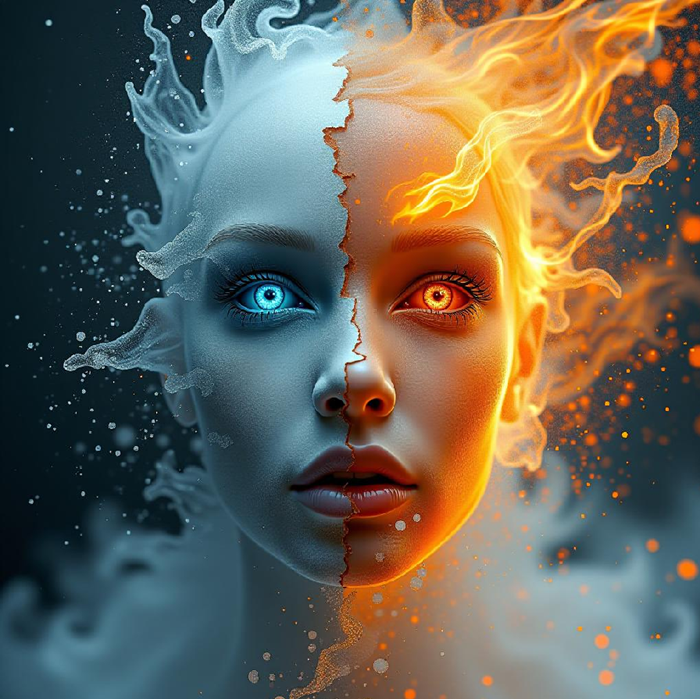
Comparing Flux
While Flux performs exceptionally well in benchmark tests, the real question is: how do its generated images measure up? We compared Flux to some of the most well-known image generators currently available, and we were genuinely impressed with the results.
Note: We compared all the models using the same prompts, though sometimes we needed to make small adjustments to a few prompts to clarify the instructions. We have discussed these adjustments in our verdict, and your results might differ from ours.
In this comparison, we used the FLUX model, which you can find on Modelslab. It combines Flux Dev and Flux Schnell, allowing users to produce high-quality images much faster than other models.
Here's a comparison between Flux, Stable Diffusion, Run Diffusion, DALL-E 3, and a direct head-to-head matchup against Midjourney:
Realism
The best way to compare any models is by checking how realistic their images look. Can we find the difference between real images and AI-generated images? For this basic test, we used a simple prompt to evaluate the realism of all the models.
Here are the results.
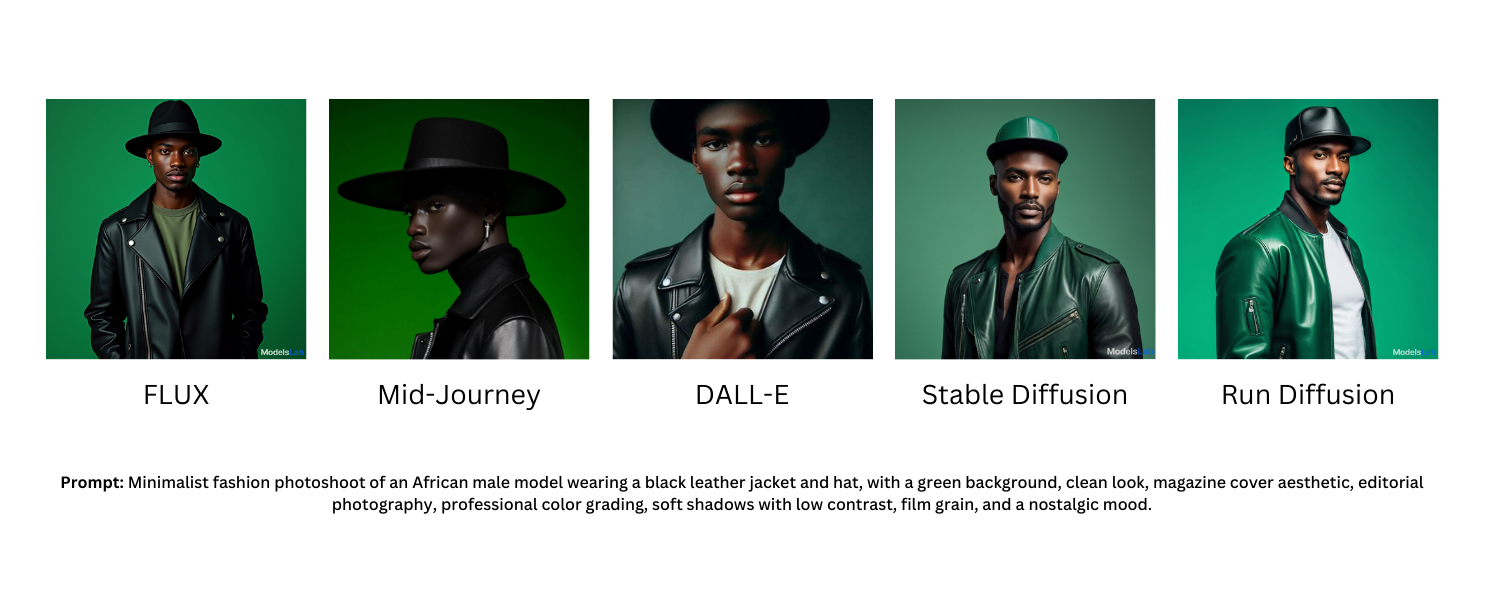
Verdict: After generating the images, Flux has outperformed the others. The images generated by Midjourney and DALL-E are also good, but Flux stands out due to the level of detail in its images and the realistic skin tone (a major factor). The image generated by Flux looks more realistic because of its high quality and accurate skin shading. However, stable diffusion and run diffusion were unable to generate a jacket in black.
Combination and Brand Awareness
We wanted to see how well this new model can combine different characters or objects and whether it can accurately understand brands. To test this, we provided a prompt (you can see it below).
Here are the results.
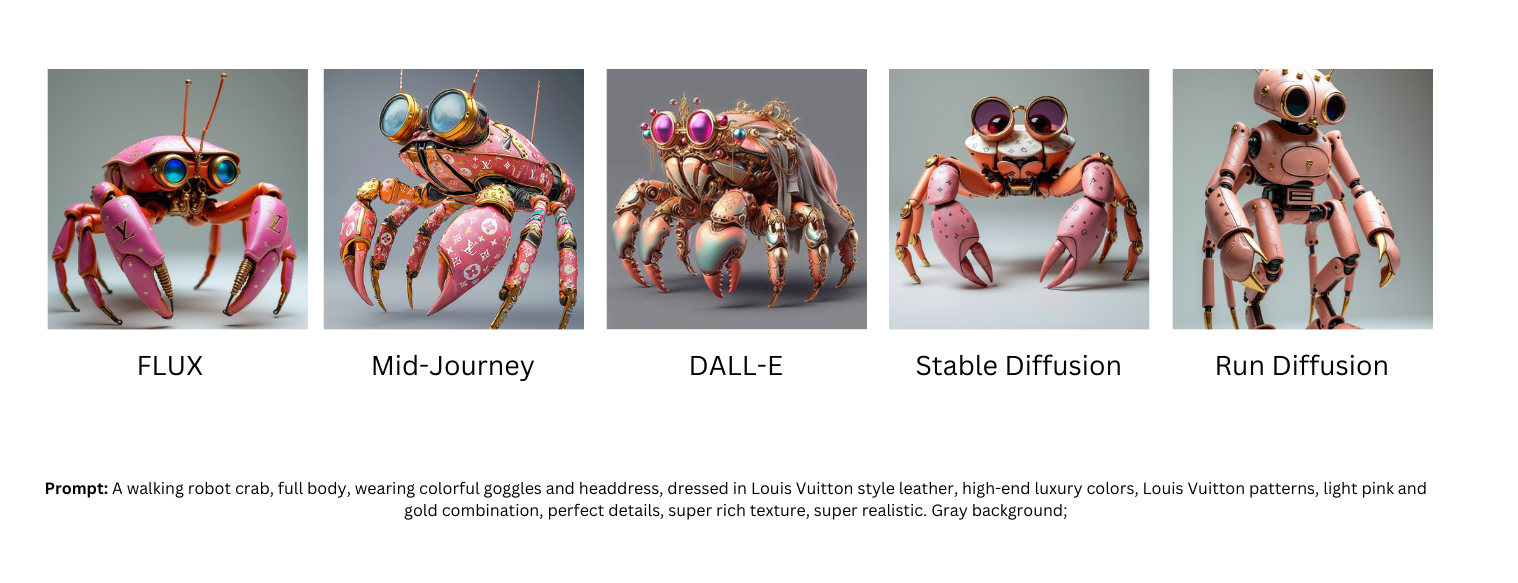
Verdict: One of the things we were looking for in these generated images was a leather dress by Louis Vuitton. Flux, Midjourney, and Stable Diffusion used the company's logo to indicate branding. However, DALL-E was unable to produce images with the brand name, so we had to remove the brand name from it. Stable Diffusion generated the image in a robotic form with crab legs, which we consider valid, but the result was not as expected.
Among the top three contenders, Flux produced a more detailed image, showing the leather dress as stitched, making it look more realistic than the images generated by Midjourney and Stable Diffusion. These small details set it apart from the other contenders in this prompt.
Painting Illustration
Many businesses and content creators want to create art that reflects their imagination, sometimes opting for simple designs and other times for more creative ones. We wanted to evaluate how well these models can create AI art, painting illustrations in a classic comic book style.
Here are the results from the prompt.

Verdict: This was a challenging task for all the models, so we decided to provide the prompt with slight changes each time (we did this three times) to get the best result. Some of these models struggled to understand the prompt and produced realistic modern images. However, after making adjustments and using more focused wording, the models generated these images.
In this part, Midjourney outperformed the other competitors, followed by Flux and Stable Diffusion. The image we were expecting was produced by Midjourney on its third attempt. Flux generated a high-quality illustration from the prompt, but it looked more like modern art.
Stable Diffusion performed well overall. DALL-E was unable to generate an image on the first two attempts, and although it did create an image on the third try, the hands in that image appeared somewhat unstable. Run Diffusion also performed well in this category.
Illustration
We have seen these kinds of illustrations on stock image platforms. Sometimes, students, educators, creators, and businesses need such illustrations to explain specific points. Therefore, we decided to test the efficiency of Flux in generating these types of illustrations.
Here are some results from the prompt:
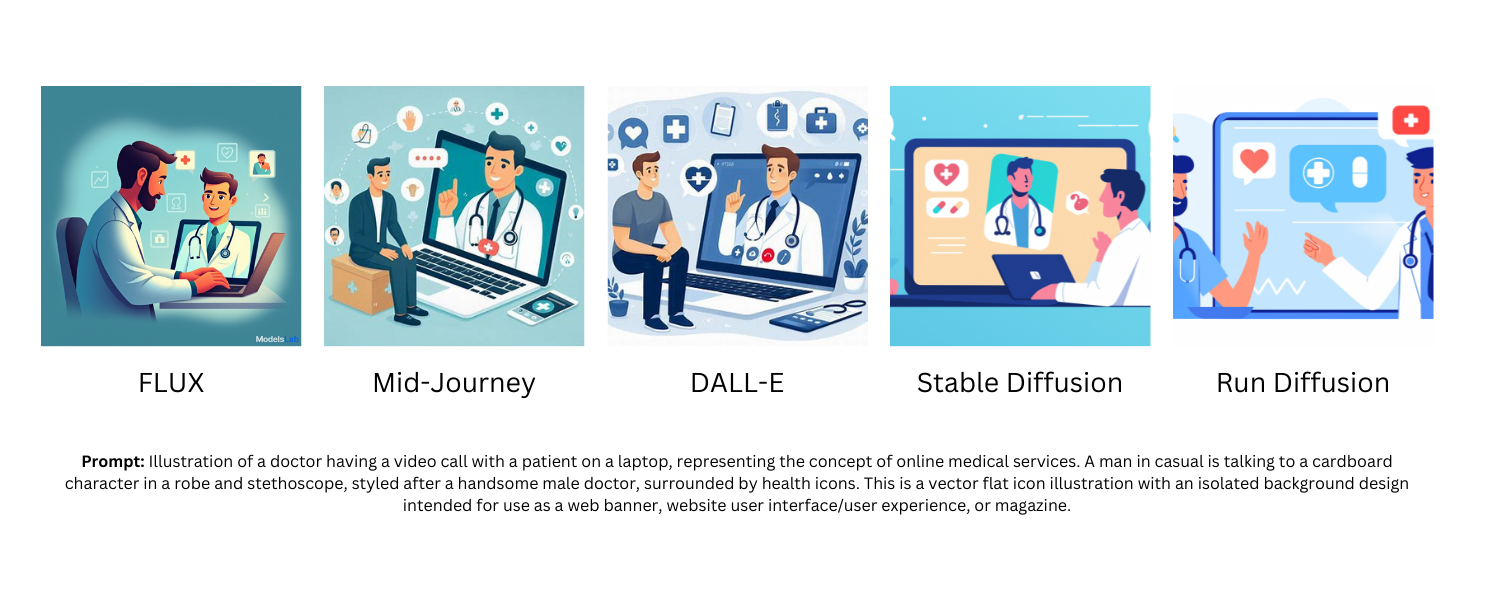
Verdict: This was a bit confusing for some models, as they were producing real-life images instead of the desired graphic form. However, Flux, Midjourney, and DALL-E generated the illustration in graphic form on the first try, as expected. All the illustrations are great, and with a few adjustments, you can generate even better illustrations.
Product Marketing
Whenever a business wants to adopt advanced AI tools for marketing, such as AI image generation tools, they look for the quality of the images produced by the models and how these images can be used in their marketing and advertising efforts. We provided a prompt to understand this scenario and see how these models can generate images.
Here are the results.
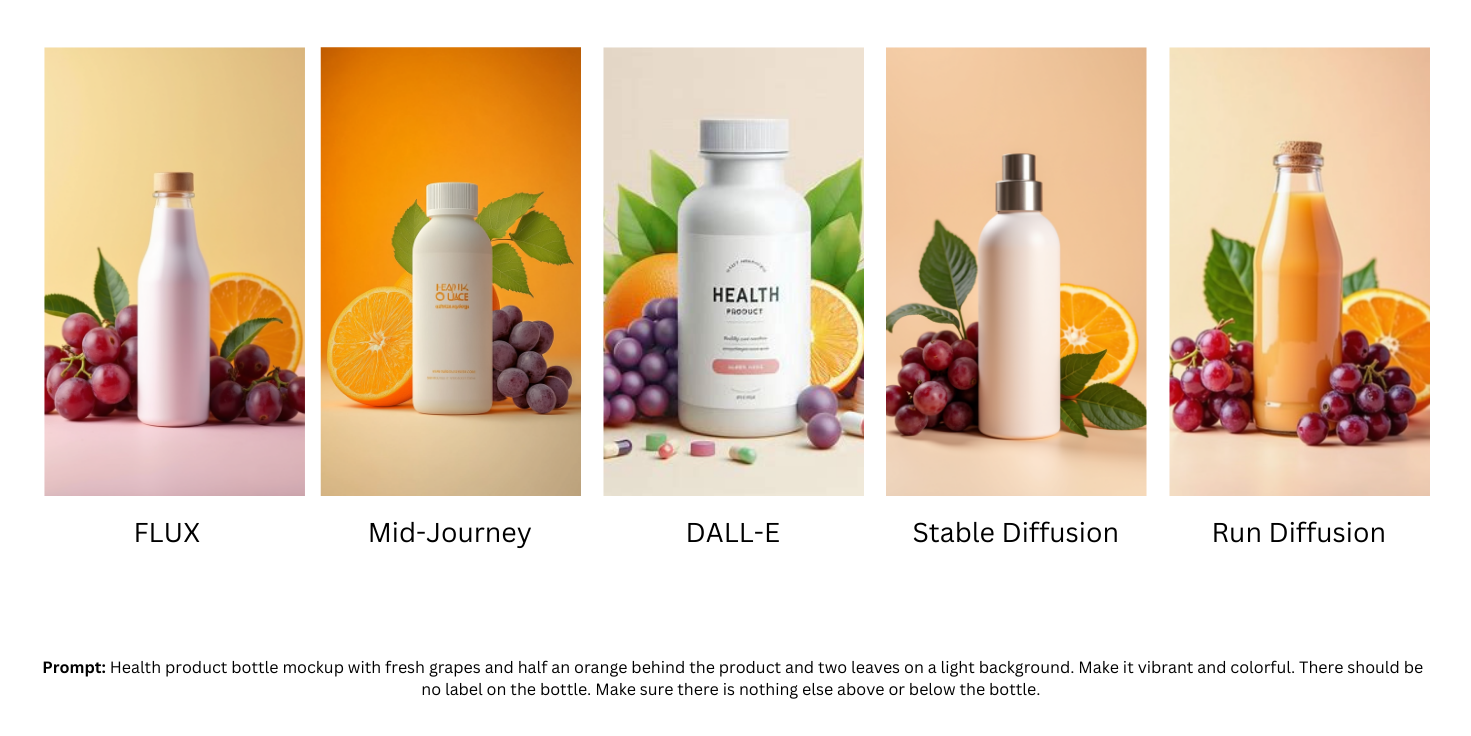
Verdict: All the results are good and look great for marketing purposes. I didn't specify the type of bottle, so each model created a different type of bottle. One major issue with a few models is that, even though we clearly mentioned that we didn't want a label, they still produced images with labels.
Other than that, the quality of all the generated images is excellent. The image quality was particularly outstanding for Flux and Midjourney.
So, Here is final overview and comparison of all the models:
Models Overview
Flux | Mid-Journey | Stable Diffusion | DALL-E | Run Diffusion |
|---|---|---|---|---|
FLUX AI is built for users who need detailed and precise results. It offers many customization options, making it great for commercial projects where accuracy is Important. | Mid-Journey is a top choice for artists because it produces visually captivating and creative images. It's especially good for abstract and surreal styles, making it great for exploring artistic ideas. | Stable Diffusion strikes a balance between speed and image quality. It’s ideal for projects that need fast results without sacrificing too much in terms of final image quality. | DALL·E is recognized for its ability to create imaginative and whimsical images. Developed by OpenAI, it handles complex and detailed prompts well, making it a versatile tool for creative professionals. | Runway's Run Diffusion is noted for its ability to produce high-quality images efficiently. It excels at balancing creativity and speed, making it an excellent choice for both artistic projects and practical applications. |
Strengths:
| Strengths:
| Strengths:
| Strengths:
| Strengths:
|
Weaknesses:
| Weaknesses:
| Weaknesses:
| Weaknesses:
| Weaknesses:
|
Models Comparison
Feature/Metric | Mid-Journey | FLUX AI | DALL-E | Stable Diffusion | Run Diffusion |
|---|---|---|---|---|---|
Image Quality | Artistic, High Quality | Photorealistic, Very High | Imaginative, High Quality | Balanced, High Quality | High Quality, Varied |
Customization | Limited | Extensive | Moderate | Limited | Moderate |
Speed | Moderate | Fast (Flux.1 Schnell) | Variable | Fast | Fast |
Ease of Use | Very User-Friendly | Technical, Steeper Learning Curve | Moderate | Easy to Use | User-Friendly |
Best For | Artistic Exploration | Commercial, Detailed Projects | Creative Projects | Rapid Prototyping | Experimentation, Creative Projects |
Community Support | Strong Creative Community | Active Open-Source Community | Large Developer Community | Large Developer Community | Active Open-Source Community |
Prompt Adherence | Flexible Interpretation | Very Precise | Flexible | Balanced | Flexible |
Max Resolution | High | Up to 2.0 Megapixels | High | High | High |
Model Parameters | Proprietary | 12 Billion | Proprietary | Variable | Variable |
Applications of Flux
Flux offers a range of practical applications across various industries:
Creative Industries: Ideal for graphic designers, illustrators, and artists to generate concept art, mood boards, and visual inspirations quickly.
Marketing and Advertising: Enables marketers to create custom visuals for campaigns, social media, and product mockups with speed and quality.
Game Development: Helps game designers rapidly prototype environments, characters, and assets, streamlining pre-production.
Architecture and Interior Design: Allows architects and designers to generate realistic visualizations of spaces and structures from textual descriptions.
Education: Useful for educators to create visual aids and illustrations that enhance learning materials and simplify complex concepts.
Film and Animation: Assists storyboard artists and animators in quickly visualizing scenes and characters, speeding up the pre-visualization process.
Pricing
The FLUX model, available on ModelsLab, integrates the capabilities of Flux Dev and Flux Schnell, allowing users to generate high-quality images more quickly than with other models.
Basic Plan:
$27 per month
Includes 3,250 API calls
Professional Plan
$47 per month
Includes 10,000 API calls
With these plans, you can choose the option that best suits your image generation needs.
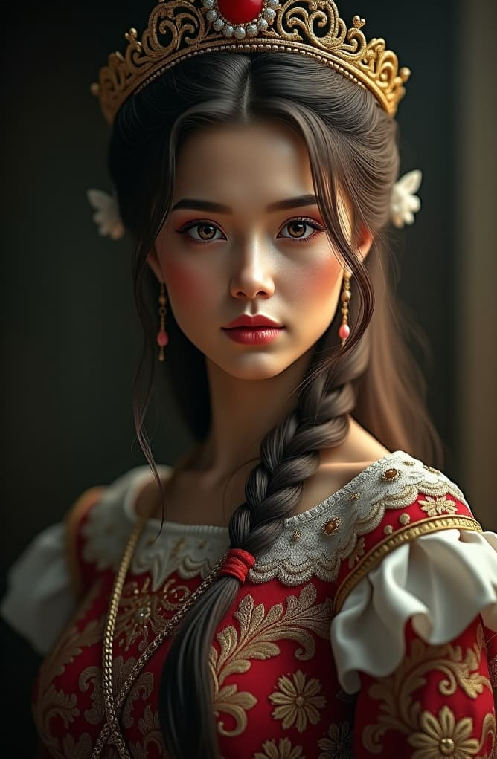
Final Thoughts
AI image generation has become an essential tool for creators, developers, and marketers. With many platforms available, choosing the right one can be challenging.
In this guide, we explored five prominent AI image generators: Mid-Journey, FLUX, DALL·E, Run Diffusion, and Stable Diffusion. Here’s a summary of their strengths and how they stack up:
FLUX AI stands out for its high-quality, photo-realistic images and precise control. It’s ideal for commercial projects requiring detailed results. FLUX offers impressive speed and flexibility, especially with its Flux Schnell model.
Mid-Journey is best for artists and designers seeking creative, abstract, and imaginative visuals. Its user-friendly interface and strong artistic capabilities make it perfect for exploring artistic ideas.
DALL·E excels in generating imaginative and whimsical images. Developed by OpenAI, it handles complex prompts well, making it a versatile tool for creative professionals.
Stable Diffusion provides a balance of speed and quality, making it suitable for rapid prototyping and efficient image generation. It performs well for projects that need quick results without sacrificing too much detail.
Run Diffusion is noted for its efficiency and good-quality outputs. It strikes a balance between creativity and speed, making it a strong choice for both artistic and practical applications.
Final Verdict: FLUX AI is the go-to for projects demanding high detail and realism. MidJourney is perfect for artistic exploration, while DALL·E offers flexibility for creative work. Stable Diffusion and Run Diffusion are excellent for quick, efficient results. Each model has its strengths, so the best choice depends on your specific needs and project goals.
